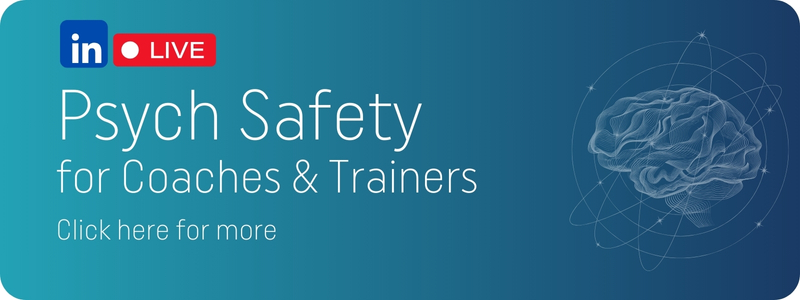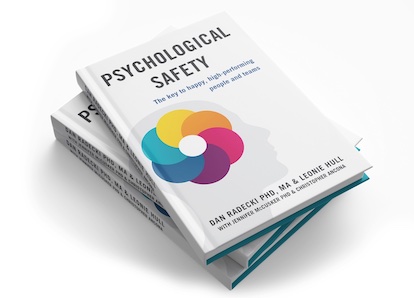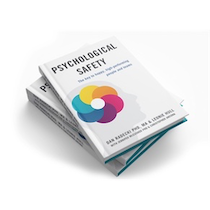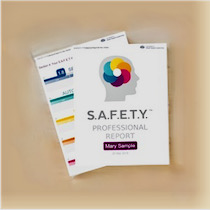If you’re reading this article, I’m sure you’ve been exposed to numerous philosophies around how to improve leadership capacity. Usually, there’s an inverse correlation between the number of books on a topic and an agreed-upon understanding of said topic. For example, there are literally hundreds of different diet books around the globe, yet obesity, heart disease, hypertension, and diabetes are all on the rise.
Similarly, despite the wide variety of leadership manuals out there, we continue to see employee performance suffer. The 2023 global Gallup survey (>122K employees in 160 countries) found that 44% of employees questioned reported “a lot of stress” in their workplace, which is a record high since data collection began 13 years ago. In addition, 51% of currently employed workers stated that they were actively seeking a new job, and not surprisingly, 59% of employees globally report being not engaged (i.e., “quiet quitting”).
Introducing Neuroscience as the Core Solution
Obviously, we still haven’t cracked the code for leading our employees to fully realize their potential. As with any complex phenomenon, the best place to start is at the core or foundation of the issue. This is where neuroscience comes into play. Understanding the basic biological drivers of our behaviors and decision-making can help leaders become more self-aware, emotionally intelligent, and ultimately more effective. Indeed, current ongoing academic research is validating this idea of the psychological benefits of neuro-education.
The Importance of Self-Awareness in Leadership
In our experience, this makes sense, as from a neuroscience standpoint, effective leadership includes ensuring that people have self-awareness around what is driving their behaviors so that they can think clearly and avoid the pitfalls of bias and irrational decision-making. What we’ve found is that this self-awareness starts with knowing our specific psychological stressors, as only then can we hope to recognize their impact on ourselves and others. This ability to scrutinize our own perceptions of the world is an incredibly powerful tool, as it allows us to step out of our own “version” of reality and see it more objectively.
“It’s Not Me, It’s My Brain”: Embracing Metacognition
“It’s not me, it’s my brain” is the mantra we use to describe the philosophy that follows when we develop this ability, and what we’ve found is that it opens people to more of a growth mindset and propensity to appreciate diverse perspectives. This self-awareness via “metacognition” (i.e., thinking about your thinking) is critical for truly effective leadership. We know that based upon the way our brain is wired, we cannot focus on others until we feel safe. So if I have poor self-management and I don’t take care of my psychological stress triggers, then my team suffers.
Focusing on the Self as the Starting Point
So, from a neuroscience standpoint, focusing on the “self” is the necessary starting point. The additional perk to this is that once a leader creates this brain-centred self-awareness, it not only enhances their team dynamics but also improves their personal well-being and relationships in their daily lives. You take your brain everywhere you go, so being able to understand and manage your triggers not only makes it easier to be a more effective leader with your team but also helps you better understand your family members or that clerk in the supermarket with a vastly different political ideology than you.
Building Objective and Inclusive Team Dynamics
Once you have a brain-based perspective and filter, you can now be more objective and open-minded in your relationships with team members as the veil of bias is less blinding. This leads to more positive collaborations and starts to build a team that feels valued for who they are, and words like “vulnerable” and “belonging” start to emerge as ways to describe team members. In this sense, neuro-education can be seen as a critical starting point for making meaningful changes in stress management, resilience, and DEIB initiatives.
The Role of Psychological Safety and ISO 45003
Leaders who have a grasp on developing a psychologically safe approach will need to become the norm as organizations struggle to comply with the recent guidance from the International Organization for Standardization (ISO). Their most recent standard (ISO 45003) involves mental health in the workplace and specifically calls out psychological safety and health as a responsibility of employers and lays out specific guidelines to manage psychosocial risks. A key takeaway from the ISO 45003 is the need to have reinforcement to truly build and maintain psychological safety on a team. The natural starting point for understanding and nurturing psychological safety is at its biological foundation—the brain.
Implementing Brain-Based Leadership Strategies
This means that creating neuro-education and self-awareness is simply the first step. Leaders then need to make a commitment to maintaining this safety for themselves and others, utilizing sufficient tools, metrics, and processes to proactively monitor and manage psychological safety. This is where ABL provides support in the form of a validated assessment, leader toolkits, and ongoing psychological safety “pulse checks” to diagnose any issues before they escalate. A comprehensive approach like this is important because we know that psychological safety is an incredibly complex and variable phenomenon and therefore takes sustained effort on the part of a leader to build and maintain within a team.
Begin Your Journey to Brain-Based Leadership
Join me for a 16-week learning journey on the Brain-based Leadership Certificate. Understand the key neuroscientific principles underpinning effective leadership and learn how the brain is key to influencing and improving the productivity, relationships and well-being of you & your team.
For coaches, consultants and trainers: add to your toolkit and get accredited in our S.A.F.E.T.Y.™ Model & Assessment to help your clients make sense of their psychological safety needs and triggers. Next intake commences in February 2025!
You also may be interested in:
- Reading our best-selling book ‘Psychological Safety: The Key to Happy, High-Performing People & Teams’ by Dan Radecki and Leonie Hull.
- Learning more about ABL’s neuroscience-based Psychological S.A.F.E.T.Y.™ Model & Assessment
- Exploring our organizational solutionsfor building psychological safety
- Watching our on-demand webinar ‘Building a Culture of Psychological Safety’














